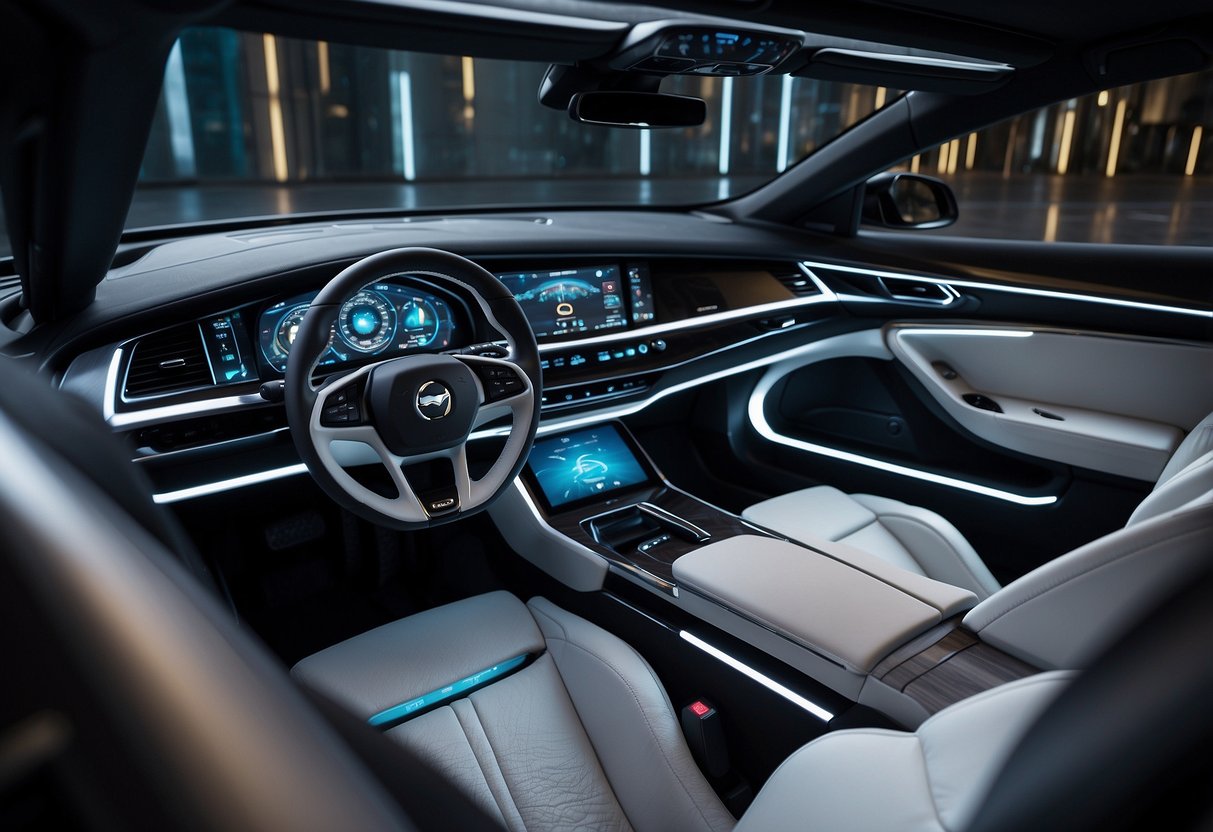
The Role of Suppliers in Vehicle Technology
In 2024, vehicle technology advancements hinge significantly on the innovations supplied by external partners. These collaborations shape the future of mobility, fueling progress and driving innovation.
Contributions to Technological Advancements
Suppliers contribute critical components and technologies that form the backbone of modern vehicles. Companies like Hyundai Mobis are key players, providing advanced driver-assistance systems (ADAS), infotainment solutions, and electric vehicle (EV) components. Their expertise in integrating cutting-edge technologies ensures vehicles remain competitive and align with industry standards.
Mobion focuses on developing high-performance battery systems, crucial for the growing demand for electric vehicles. Advanced materials, lightweight components, and energy-efficient technologies from suppliers enhance vehicle performance, safety, and sustainability. These contributions allow automakers to incorporate the latest innovations without the need for in-house development, making it easier to meet consumer expectations and regulatory requirements.
Partnerships for Future Mobility
Automakers and suppliers form strategic partnerships to push the boundaries of vehicle technology. These collaborations are crucial for the development of autonomous driving technologies, electrification, and connectivity solutions. By leveraging the specialized expertise of suppliers such as Hyundai Mobis and others, car manufacturers can accelerate their technological advancements and share the benefits of research and development.
Joint ventures like those between automakers and tech companies enable the creation of integrated mobility solutions. Suppliers work closely with manufacturers to ensure that new technological advancements are seamlessly integrated into vehicle platforms. This cooperation ensures that safety, reliability, and user experience are prioritized, setting the stage for future innovations built on a foundation of proven technology.
Smart Technologies in Automobile Safety Systems
With advancements in automotive technology, the focus on safety has grown significantly. Two key areas of innovation include camera-based safety features and revolutionary solutions by Harman.
Camera-Based Safety Features
Modern automobiles are increasingly equipped with advanced camera systems that provide a range of safety benefits. These cameras help in detecting hazards, assisting with parking, and enhancing night vision.
For instance, lane-keeping assist uses cameras to monitor road markings and helps keep the car within its lane by making small steering adjustments. Blind-spot detection, another camera-based feature, alerts the driver to vehicles approaching from the side. Rearview cameras provide real-time images when the car is in reverse, reducing the risk of backover accidents.
Camera systems also play a crucial role in autonomous emergency braking (AEB). They identify potential collisions and automatically apply the brakes if the driver does not respond in time, significantly reducing accident rates. The integration of artificial intelligence has further enhanced the accuracy and functionality of these camera systems, making driving safer and more convenient.
Revolutionary Safety Solutions Provided by Harman
Harman is at the forefront of automotive safety technology. Their advanced driver-assistance systems (ADAS) offer a suite of features designed to protect passengers and pedestrians.
One of Harman’s notable contributions is its high-resolution 360-degree surround view system. This setup uses multiple cameras to stitch together a comprehensive view of the vehicle’s surroundings, assisting with parking and low-speed maneuvers. Another innovation is Harman’s e-mirror technology, which replaces traditional side mirrors with cameras. These cameras offer a broader field of view and reduce blind spots, enhancing driver awareness.
Harman also focuses on V2X (vehicle-to-everything) communication technology. This enables cars to communicate with each other and with infrastructure, providing real-time traffic information and hazard alerts. Such connectivity improves traffic flow and reduces the likelihood of accidents. Through continuous innovation, Harman is reshaping vehicle safety, ensuring that drivers and passengers are better protected on the road.
Market Trends & Pricing Considerations
With the advent of 2024, automotive technology continues to evolve, influencing both market trends and pricing. Buyers must navigate an array of starting prices for new models while anticipating shifts in vehicle sales.
Comparing the Starting Prices of New Models
In 2024, the starting prices for new car models vary widely based on technological features and brand positioning. Premium brands like BMW showcase next-gen innovations and performance, starting at around $40,000 for base models. In contrast, non-luxury brands focus on affordability while incorporating essential tech, with starting prices ranging from $20,000 to $30,000.
Electric vehicles (EVs) continue to see a rise in competitive pricing. Entry-level EVs now start at approximately $25,000, significantly impacting consumer choices. The market also sees mid-range models featuring autonomous driving capabilities, like advanced lane-keeping and adaptive cruise control, at starting prices of about $35,000.
Luxury electric SUVs push higher price boundaries, starting at $70,000, reflecting premium builds and cutting-edge features.
Predictions for Vehicle Sales Trends
Vehicle sales trends in 2024 indicate a growing preference for electric and hybrid models. Market reports predict a 10% increase in EV sales, driven by rising environmental awareness and government incentives. Hybrid models also show a strong presence, capturing about 15% of total car sales.
Consumer interest leans heavily towards SUVs and crossovers, which dominate the market share. This trend includes both compact and full-size variants, given their versatility.
Subscription-based ownership models rise in popularity, providing flexibility that traditional leasing lacks. This shift underscores changing consumer behavior, with many opting for access over ownership, impacting sales dynamics.



